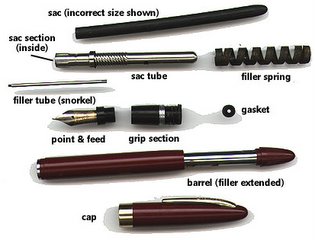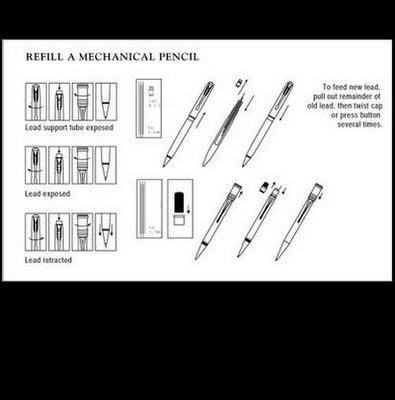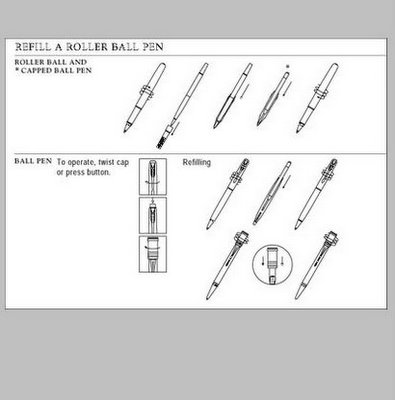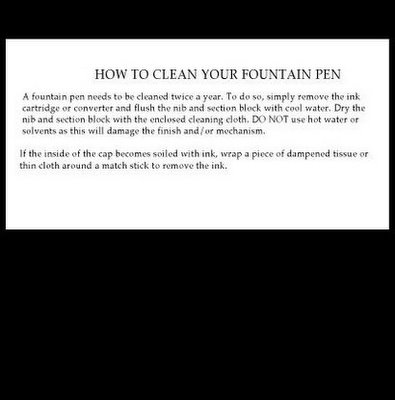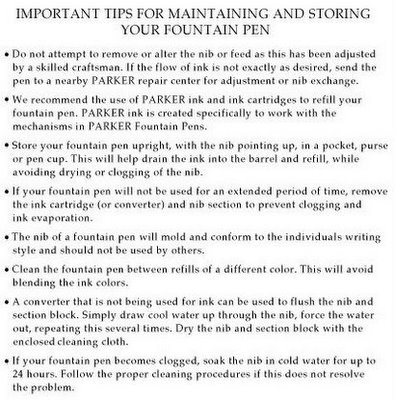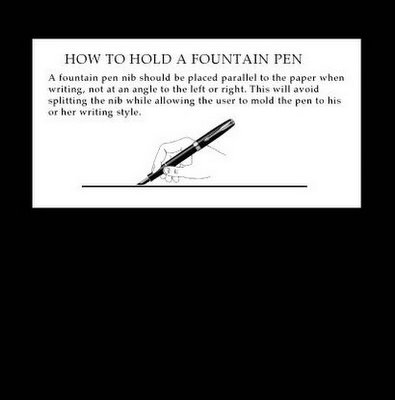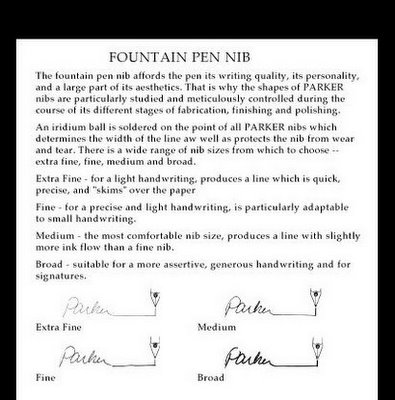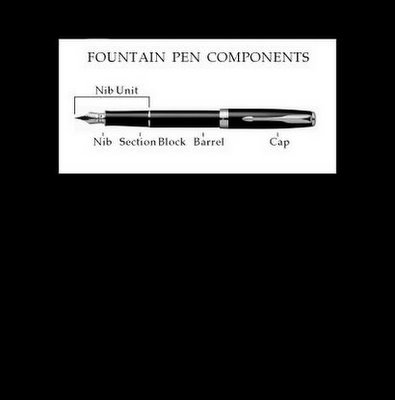IV. THE INCIDENT AT BP 541
A. (U) Introduction
(U) This section examines the shooting incident at BP 541 on the night
of 4 March 2005. The section begins with a description of the site and
then a brief look at the individuals involved. The mission assigned to
the 1-69 IN Soldiers is detailed. The incident itself is then
described. The events immediately following the shooting are addressed
next. Following this is a look at the forensic evidence. The section
concludes with findings and recommendations.
B. (U) Site Description
(U) BP 541 was located on the on-ramp from southbound Route Vernon
onto westbound Route Irish approximately six miles west of the
International Zone in Baghdad. Specifically, BP 541 (Grid 38S MB3571
8371) was located at the intersection of Route Vernon and Route Irish,
which is the second intersection on Route Irish east of Baghdad
International Airport (BIAP). The road leading to the on-ramp begins
where the westernmost lane of Route Vernon separates from the highway.
The on-ramp itself begins near a side street that borders the edge of
a housing area on the west side of the road. This point is
approximately 640 meters south of the nearby underpass on Route
Vernon, and approximately 380 meters from where the road to the
on-ramp splits from Route Vernon. (Annexes 141K, 144K).
(U) At the interchange of the on-ramp and Route Vernon, the highway
becomes an overpass extending over Route Irish. Three separate
concrete Jersey barriers are located in the on-ramp to Route Irish.
The barriers are arranged with the first two barriers on the right
hand side of the on-ramp and the third one on the left hand side of
the on-ramp, but not in a serpentine configuration, as one approaches
from the north. The first barrier is approximately 75 meters from the
concrete abutment of the Route Vernon overpass near the beginning of
the on-ramp. The second barrier is approximately 37 meters beyond the
first barrier (112 meters from the concrete abutment). The third
barrier is approximately 31 meters beyond the second barrier (143
meters from the abutment). This third, or southernmost, barrier is
approximately 80 meters from where the on-ramp merges with westbound
Route Irish. The total length of the on-ramp is approximately 223
meters. (Annexes 142K, 144K).
(U) From the vantage point of the southernmost barrier, Route Irish is
directly south of the position with a 50-meter median separating the
eastbound and westbound lanes. To the north and northwest of the
position, there is a large open area that is littered with garbage and
debris. The field extends from the bottom of the on-ramp to the side
street and west. Immediately beyond the side street, approximately 150
meters from the southernmost barrier, is a large housing community
with windows and porches that overlook the on-ramp. There is a clear
line of sight from the houses to the on-ramp. The Route Vernon
overpass stands several stories higher than the on-ramp and runs
parallel to the on-ramp until the on-ramp curves to the southwest,
approximately 50 meters from the beginning of the on-ramp. The
overpass is supported by large cylinder concrete supports. The ground
under the overpass is also littered with garbage and debris. (Annexes
16K, 143K).
(U) The road itself is concrete. There is a slight elevation gain
between the beginning of the on-ramp and its merger with Route Irish.
The curve is banked slightly. The on-ramp, but for the Jersey
barriers, is wide enough to accommodate two vehicles abreast of each
other, i.e., it is two-lanes wide. (Annexes 16K, 19K).
C. (U) Personnel Involved
1. (U) Captain Michael Drew, New York Army National Guard, a New York
City Police Department Sergeant was the Commander, A Company, 1-69 IN,
in charge of patrolling Route Irish and establishing blocking
positions at four checkpoints on the night of 4 March 2005. (Annex
1J).
2. (U) First Lieutenant Robert Daniels, New York Army National Guard,
was the Executive Officer for A Company, 1-69 IN on 4 March 2005 and
was initially present at BP 541. (Annex 2J).
3. (U) Second Lieutenant Nicolas Acosta, Louisiana National Guard, was
the platoon leader in charge of BP 541 on 4 March 2005. (Annex 6J).
4. (U) Sergeant Sean O'Hara, Louisiana National Guard, was in the
overwatch vehicle at BP 541 on 4 March 2005. (Annex 8J).
5. (U) Sergeant Luis Domangue, Louisiana National Guard, was the
secondary gunner in the overwatch vehicle at BP 541 on 4 March 2005.
(Annex 5J).
6. (U) Specialist Kenneth Mejia, Louisiana National Guard, was the
driver of the overwatch vehicle at BP 541 on 4 March 2005, and a
trained combat life saver. (Annex 4J).
7. (U) Staff Sergeant Michael Brown, New York Army National Guard, a
New York City Police Department officer was the acting Platoon
Sergeant at BP 541 and the Truck Commander of the blocking vehicle on
4 March 2005. (Annex 7J).
8. (U) Specialist Mario Lozano, New York Army National Guard, was the
gunner on the blocking vehicle at BP 541 on 4 March 2005. He had been
an M240B and M249 gunner in previous assignments. (Annex 10J).
9. (U) Specialist Brian Peck, New York Army National Guard, was the
driver of the blocking vehicle at BP 541 on 4 March 2005. (Annex 9J).
10. (U) Sergeant First Class Edwin Feliciano, New York Army National
Guard, was with the Company Commander's vehicle on 4 March 2005.
(Annex 3J).
11. (U) Mr. Nicola Calipari was an Italian military intelligence
officer with the rank of Major General who was in charge of the
recovery of Ms. Sgrena on 4 March 2005. (Annex 104C).
12. (U) Mr. Andrea Carpani is an Italian military intelligence officer
with the rank of Major in the Carabinieri with years of experience
working and driving in Baghdad. He was driving the car involved in the
incident on 4 March 2005. (Annex 104C).
13. (U) Ms. Giuliana Sgrena is an Italian journalist for Il Manifesto.
She had been kidnapped and held hostage in Baghdad for one month at
the time of her release on the night of 4 March 2005. (Annex 103C).
D. (U) The Mission
1. (U) Receipt of the Mission
(U) The mission of A Company, 1-69 IN on 4 March 2005 was their
standard mission, i.e., to provide security along Route Irish. The
mission entailed looking for IEDs and VBIEDs and ensuring Coalition
convoys could safely transit between the International Zone and BIAP.
A Company, 1-69 IN had been performing this mission since 15 February
2005. Their normal patrol shift was 1500 to 2300 daily. (Annex 137C).
(U) While on patrol, Captain Drew received two VBIED BOLO reports via
radio, one for a black car, another for a white car. (Annexes 74C,
13E, 14E). He passed that information via radio to his subordinate
leaders, including Second Lieutenant Acosta, who passed it on to his
troops. (Annexes 74C, 77C).
(U) At 1843 hours, the 1-69 IN Battle Captain received a call from the
1-76 FA Battle Captain asking how quickly they could establish
blocking positions along Route Irish. (Annexes 60C, 61C, 3L).
(S//NF) Adverse weather had mandated that the VIP travel by ground
rather than by helicopter, and the Embassy requested that access to
Route Irish be blocked for the movement. (Annexes 60C, 61C, 3L).
(S//NF) At approximately 1900 hours, A Company, 1-69 IN received a
mission from its Battalion TOC. A Company was directed to establish
blocking positions on the four westbound on-ramps along Route Irish to
support the movement of a VIP from the International Zone as they
would for a Rhino Bus Run mission. (Annexes 58C, 133C, 137C).
(U) At 1916 hours the 1-76 FA Battle Captain called the 1-69 IN Battle
Captain to order all elements to report to their blocking positions
for the VIP transit. (Annex 3L).
(S//NF) Captain Drew considered the current enemy situation, and
decided to place an M2 Bradley Fighting Vehicle at both Checkpoint 542
and Checkpoint 543, and two HMMWVs each at Checkpoint 540 and
Checkpoint 541. He assigned Checkpoint 541 to a team led by Second
Lieutenant Acosta. (Annex 137C).
(U) At approximately 1930 hours, Second Lieutenant Acosta arrived at
Checkpoint 541 with three HMMWVs. He found First Lieutenant Daniels in
position at the on-ramp. Second Lieutenant Acosta relieved First
Lieutenant Daniels. A short time later, Captain Drew pulled up in his
HMMWV, took one of Second Lieutenant Acosta's HMMWVs for placement at
Checkpoint 540, and then left with First Lieutenant Daniels
accompanying him. (Annex 133C).
(U) At 1938 hours, the 1-69 IN Battle Captain reported to the 2/10 MTN
Battle Captain that all blocking positions had been established. The
1-76 FA Battle Captain reported to the 2/10 MTN Battle Captain that
the VIP would depart in approximately five to ten minutes. (Annex 2L).
(U) At 1945 hours, the VIP security convoy NCOIC reported to the 1-76
FA Battle Captain that the convoy with the VIP departed the
International Zone with a destination of Camp Victory. The 2/10 MTN
Battle Captain requested the VIP's convoy departure time and
composition from the 3ID JOC Battle Captain, as they were not in
direct contact with 1-76 FA. Meanwhile, the 1-76 FA Battle Captain
directed 1-69 IN Battle Captain to initiate the Route Irish closure
plan. (Annexes 59C, 64C, 2L).
2. (U) Establishing the Blocking Position
(U) The instructions given to Second Lieutenant Acosta by Captain Drew
were to set up a blocking position to facilitate the movement of a VIP
down Route Irish. (Annex 77C). Captain Drew also issued guidance on
the importance of force protection. (Annex 74C). He expected to
maintain the blocking position no more than 15 minutes. (Annexes 74C,
77C).
(U) Second Lieutenant Acosta emplaced his two vehicles to establish
the blocking position. He positioned the blocking vehicle commanded by
Staff Sergeant Brown on the road, near the outer curb, positioned in
conjunction with the second barrier of three Jersey barriers already
on-site on the on-ramp. Second Lieutenant Acosta placed the overwatch
vehicle by the third Jersey barrier, closest to Route Irish. (Annexes
142K, 143K). In their final positions, both vehicles were facing
toward Route Irish. (Annex 77C).
(U) Second Lieutenant Acosta, using the factors of METT-TC, positioned
the vehicles to provide standoff from the overpass (a common hand
grenade throwing location), a clear line of sight to on-coming
traffic, overwatch field of view (to watch for threats from nearby
buildings), and to allow adequate room for on-coming vehicles to stop
and turn around. (Annexes 77C, 83C).
(U) Staff Sergeant Brown's vehicle was positioned to block traffic
from using the on-ramp to enter Route Irish. The other vehicle was
positioned to provide overwatch of the area as well as to block
traffic entering the on-ramp the wrong way from Route Irish. (Annexes
77C, 83C).
(U) After consulting with Staff Sergeant Brown, Second Lieutenant
Acosta established the Alert Line at the concrete abutment of the
Route Vernon overpass. The Warning Line was established as the second
light pole on the overpass up the on-ramp from the Alert Line.
(Annexes 77C, 83C, 16K).
(U) Second Lieutenant Acosta and Staff Sergeant Brown informed the
gunners of the Alert Line and Warning Line locations, and reviewed
when to shine the spotlight, and when to fire warning shots. (Annexes
77C, 83C).
3. (U) The duties of the Soldiers
(U) Specialist Peck was the driver of the blocking vehicle and was to
remain in the driver's seat, facing west down Route Irish. (Annexes
85C, 130C).
(U) Specialist Lozano was the gunner in the blocking vehicle. He was
to remain in the turret, facing north up the on-ramp toward on-coming
traffic. From there, he was to operate a three million candlepower
hand-held spotlight that he was to shine on approaching vehicles as
soon as possible, even before the Alert Line (he was able to see at
least 20 meters beyond the Alert Line). (Annexes 77C, 79C, 83C, 134C).
(U) Staff Sergeant Brown, the Truck Commander of the blocking vehicle
and acting Platoon Sergeant, was to be dismounted so he could execute
local security around his vehicle. (Annexes 83C, 131C).
(U) Specialist Mejia was the driver of the overwatch vehicle and was
to remain in the driver's seat, facing west down Route Irish. (Annexes
89C, 128C).
(U) Sergeant Domangue was to be in the turret of the overwatch vehicle
where he would operate a green laser pointer. He was to shine the
laser pointer on a vehicle as soon as he saw it, but no later than at
the Alert Line, focusing it on the driver's side of the windshield. He
was also to keep watch on the area between Route Irish and the
on-ramp. (Annexes 87C, 129C).
(U) Sergeant O'Hara was to be dismounted from the overwatch vehicle so
as to provide local security for his vehicle. (Annexes 81C, 132C).
(U) Second Lieutenant Acosta was to be dismounted so he could
supervise the operation of the BP. (Annexes 77C, 133C).
4. (U) Communications Regarding the Mission Duration
(U) Captain Drew, Second Lieutenant Acosta, and Staff Sergeant Brown
were all concerned about the length of time that the Soldiers had been
manning their blocking positions. (Annexes 74C, 77C, 83C). Captain
Drew was concerned that leaving his Soldiers in a static position for
more than 15 minutes left them open to attack. He was also concerned
that he was not adequately performing his patrolling mission because
his Soldiers were tied down to the blocking positions. (Annex 74C).
(U) Captain Drew checked with the 1-69 IN TOC at least two times
seeking to collapse the blocking positions and return his Soldiers to
their patrolling mission. The 1-69 IN TOC, after checking with 2/10
MTN TOC, informed him that the convoy had not passed and to stay in
position. (Annexes 74C, 2L).
(U) At 2010 hours, the 2/10 MTN Battle Captain requested permission
from the 3ID TOC to remove blocking positions until 15 minutes before
VIP movement. (Annex 2L).
(U) At 2014 hours, the 3ID TOC Battle Captain informed the 2/10 MTN
Battle Captain that A Company, 1-69 IN could reduce their blocking
positions until 2018 hours. (Annex 2L).
(U) At 2015 hours, the 2/10 MTN Battle Captain reported to the 3ID TOC
Battle Captain that A Company, 1-69 IN blocking positions would remain
in place. (Annex 2L).
(U) At 2020 hours, the 2/10 MTN Battle Captain notified 1-69 IN to
keep blocking positions in place. (Annex 2L).
(U) At 2030 hours, Captain Drew asked again about collapsing the
blocking positions. He was told that the word from 3ID was not to move
off the blocking positions, that the convoy would be coming down Route
Irish in approximately 20 minutes, and that the convoy would consist
of four HMMWVs and an up-armored Suburban. (Annexes 97C, 3L).
(S//NF) 1-76 FA was able to communicate the requirement for blocking
positions along Route Irish for a VIP movement from the International
Zone to BIAP. (Annexes 58C, 59C, 62C, 63C). The security escort
platoon with the VIP was able to, and did, relay departure and arrival
times to the 1-76 FA Battle Captain. (Annexes 59C, 64C).
The VIP convoy departed the International Zone in four HMMWVs (and no
Suburban) at approximately 1945 hours. It arrived at the Camp Victory
gate at 2010 hours (Annex 59C). The convoy reached its destination on
Camp Victory at 2020 hours (Annex 59C). The VIP returned to the
International Zone by helicopter at approximately 2205 hours. The
determination to fly by helicopter back to the International Zone was
not made until shortly before the VIP departed as a result of clearing
weather conditions. (Annexes 59C, 64C).
(S//NF) The 1-76 TOC had two means of communicating with 4th Brigade,
its higher headquarters: Voice Over Internet Protocol (VOIP)2 and FM.
The 1-76 FA Battle Captain was using only VOIP to communicate with
1-69 IN, but experienced problems with VOIP, therefore losing its only
communication link with 1-69 IN, other than going through 4th Brigade.
(Annex 97C). As a result, the Battle Captain was unable to pass
updated information about the blocking mission either directly to 1-69
IN, or to 4th Brigade. He did not attempt to contact 4th Brigade via
FM communications. (Annex 63C). Fourth Brigade, in turn, could not
pass updated information to its major command, 3ID. (Annex 57C).
Likewise, 3ID had no new information to pass to its subordinate
command, 2/10 MTN. Finally, 2/10 MTN was thus unable to pass updated
information to its subordinate command, 1-69 IN. (Annexes 51C, 52C).
(U) There is no evidence to indicate that 1-76 FA passed on the
information about the VIP departure and arrival times to any unit.
(Annexes 59C, 63C). As a result, A Company, 1-69 IN's Soldiers were
directed to remain in their blocking positions.
(U) Other than the duty logs, there are no other written records of
communications or tape recordings among involved units relating to the
coordination to block Route Irish on the evening of 4 March 2005.
(Annex 6M).
E. (U) The Incident
(U) After arriving at BIAP from Italy in the late afternoon of 4 March
2005, and taking care of some administrative matters, Mr. Carpani and
Mr. Calipari went to some undisclosed location in the Mansour District
of Baghdad. (Annexes 104C, 105C). At approximately 2030 hours they
recovered Ms. Sgrena and headed back toward BIAP. (Annexes 103C, 104C,
109C). Both agents made a number of phone calls to various officials
during the drive. (Annex 104C). Mr. Carpani was mostly talking to his
colleague, Mr. Castilletti, who was waiting for them outside of BIAP
near Checkpoint 539. He updated Mr. Castilletti on his location and
discussed arrangements at the airport. (Annex 105C). Mr. Carpani, who
was driving, had to slow down at one point due to a flooded underpass
on Route Vernon. (Annexes 103C, 104C). Mr. Carpani, who had experience
driving in Baghdad, did not have an alternate route to the airport
planned.
2 (S//NF) 2 VOIP is a technology that allows telephone calls to be
made using a broadband internet connection instead of a regular
(analog) phone line.
(Annexes 104C, 105C). He was taking what he considered to be the most
logical route to BIAP, but was not checking his speedometer. (Annex
105C). Neither he, nor Mr. Calipari, knew the on-ramp to Route Irish
was blocked. (Annex 104C). Indeed, Mr. Carpani believed the road to
the airport was open. (Annex 105C).
(U) At approximately 2045 hours the Soldiers at BP 541 were in the
positions that they had been occupying since 1930 hours. They had
successfully turned around 15-30 vehicles, with none getting more than
a few meters beyond the Alert Line. (Annexes 77C, 79C, 81C, 83C, 87C,
132C). Specialist Lozano was in his turret, his M240B (on which he had
last qualified just five days before (Annex 6G)) pointed down and to
his left at a grassy area with Specialist Peck in the driver's seat in
the blocking vehicle. Specialist Mejia was in the driver's seat of the
overwatch vehicle with Sergeant Domangue in the turret. Sergeant
O'Hara was sitting in the rear passenger's seat of the overwatch
vehicle, cleaning his protective glasses. Staff Sergeant Brown, the
acting Platoon Sergeant, was seeking to determine how much longer they
were to remain in position. As such, he was standing with Second
Lieutenant Acosta near the overwatch vehicle, their backs to the
on-ramp. (Annexes 79C, 83C, 128C, 129C, 130C, 131C, 132C, 133C, 134C).
None of the Soldiers knew that the Italians were coming. (Annexes
116C, 117C, 118C, 119C, 120C, 121C, 122C).
(U) As the car approached the on-ramp to Route Irish, Mr. Carpani was
on the cell phone updating Mr. Castilletti on their position and
reporting that everything was going fine. (Annexes 104C, 105C). Though
not in the habit of checking his speedometer, Mr. Carpani estimated
his speed at 70-80 kph as he exited off of Route Vernon, heading
toward the on-ramp to Route Irish. (Annex 105C). The courtesy light in
the car was on and had been since picking up Ms. Sgrena in the Mansour
District of Baghdad. (Annex 104C). Additionally, Mr. Carpani had his
side window halfway open to listen for possible threats. (Annex 105C).
Ms. Sgrena and Mr. Calipari were in the rear of the car talking to
each other. (Annexes 103C, 105C). The atmosphere in the car was a mix
of excitement over the recovery of Ms. Sgrena, and tension from the
tasks yet to be completed. (Annex 140C).
(U) At approximately 2050 hours, Specialist Lozano saw a car
approaching the on-ramp, approximately 140 meters from his position.
(Annexes 79C, 134C, 144K). Specialist Lozano, holding the spotlight in
his left hand, shined his spotlight onto the car before it arrived at
the Alert Line. (Annexes 79C, 85C). At this time, Sergeant Domangue
acquired the vehicle's headlights and saw the spotlight shining on it.
He then focused his green laser pointer onto the windshield of the car
as it reached the Alert Line. (Annexes 87C, 129C). Both Specialist
Lozano and Sergeant Domangue perceived the car to be traveling in
excess of 50 mph (and faster than any other vehicles that evening).
(Annexes 79C, 87C, 129C, 134C).
(U) The car crossed the Alert Line still heading towards the Soldiers'
position without slowing down. Specialist Lozano continued to shine
the spotlight, and shouted at the vehicle to stop, a fruitless effort,
but an instantaneous reaction based on his training.
(Annexes 85C, 130C). Without slowing down, the car continued toward
the Warning Line with the spotlight and laser still on it. (Annexes
79C, 87C, 129C).
(U) The car continued to approach at a high rate of speed, coming
closer to the Soldiers than any other vehicle that evening. (Annexes
79C, 87C, 129C). When the car got to the Warning Line, Specialist
Lozano, while still holding the spotlight in his left hand, used his
right hand to quickly fire a two to four round burst into a grassy
area to the on-coming vehicle's right (the pre-set aiming point) as a
warning shot. (Annexes 79C, 87C, 125C, 129C, 134C).
(U) The vehicle maintained its speed as it went beyond the Warning
Line. (Annexes 77C, 79C, 81C, 83C, 129C, 131C, 132C, 133C). Staff
Sergeant Brown, a New York City Police Officer trained in vehicle
speed estimation, estimated the car was traveling at 50 mph and
believed that it would not be able to stay on the road around the
curve at that speed. (Annex 83C). Specialist Lozano dropped the
spotlight and immediately traversed his weapon from his left to his
right, without having to move the turret, to orient on the front of
the car. With both hands on the weapon, he fired another burst,
walking the rounds from the ground on the passenger's side of the
vehicle and towards the car's engine block in an attempt to disable
it. (Annexes 77C, 79C, 81C, 83C, 87C, 129C, 131C, 132C, 133C). The
rounds hit the right and front sides of the vehicle, deflated the left
front tire, and blew out the side windows. (Annexes 104C, 105C, 132C,
1I).
(U) Mr. Carpani reacted by saying into the phone, "they are attacking
us," not knowing who was shooting at him. (Annexes 103C, 104C, 105C).
He stepped on the brakes, curled up on the left side of the car, and
dropped the phone. (Annexes 104C, 105C). Specialist Lozano stopped
firing as he saw the car slow down and roll to a stop. Approximately
four seconds had elapsed between the firing of the first round and the
last round, and no more than seven seconds from the time the car
crossed the Alert Line until it came to a stop. (Annexes 77C, 79C,
81C, 83C, 87C, 129C, 131C, 132C, 133C, 134C). The car came to a stop
near the middle of the on-ramp, such that the first Jersey barrier was
aligned with the vehicle between the front and back doors. (Annexes
79C, 83C, 105C).
F. (U) Post-Incident Events
(U) Once the car came to a stop, Mr. Carpani got out of the car with
his hands raised, cell phone in one hand, and told the Soldiers that
he was from the Italian Embassy. (Annexes 77C, 79C, 81C, 83C, 85C,
104C, 130C, 131C, 132C, 133C, 134C). Second Lieutenant Acosta, Staff
Sergeant Brown, Sergeant O'Hara, and Specialist Peck approached the
car with weapons raised and secured the driver. (Annexes 130C, 131C,
132C, 133C). Staff Sergeant Brown patted him down and asked him if
there were others in the car. Mr. Carpani said there were two others
and that there was one weapon on the front seat and another on the
male passenger in the back seat. He warned Staff Sergeant Brown that
both weapons had a round in the chamber. Staff Sergeant Brown then
moved Mr. Carpani about 10 meters away from the car and off to the
side of the road to question him and examine him. After initially
taking control of the cell phones as well as Mr. Carpani's and Mr.
Calipari's identification and badges, Staff Sergeant Brown returned
those items to Mr. Carpani. At some point, Staff Sergeant Brown
directed the car be placed in park since the car continued to roll.
(Annexes 83C, 105C).
(U) Sergeant O'Hara and Second Lieutenant Acosta searched the vehicle.
(Annexes 77C, 81C). Second Lieutenant Acosta ordered Sergeant Domangue
to inform Captain Drew and to send Specialist Mejia over with his
medical kit. Specialist Mejia arrived at the car and found Mr.
Calipari gravely injured. Specialist Mejia was able to bandage Mr.
Calipari's wound, but Mr. Calipari died a few minutes later.
Specialist Peck also tried to assist with Mr. Calipari. He then
returned to the blocking vehicle and relieved Specialist Lozano in the
turret to allow him to collect himself. (Annex 85C, 130C). Specialist
Mejia then turned his attention to Ms. Sgrena's wounds. (Annex 89C,
128C). He tried to administer an IV, but his needles were too large.
Meanwhile, Sergeant O'Hara bandaged Ms. Sgrena's shoulder wound.
(Annexes 128C, 132C).
(U) Captain Drew then arrived on the scene along with Specialist
Silberstein, who was a qualified medic. (Annexes 127C, 128C, 133C,
134C). Specialist Silberstein assessed Ms. Sgrena and treated her for
shock. He then confirmed that Mr. Calipari was dead. (Annex 127C).
Captain Drew assessed the situation, passed all available information
to his command, and ordered the casualties to be evacuated to the
Combat Support Hospital (CSH) in the International Zone for treatment
of their wounds. He also requested an ambulance for Mr. Calipari's
body. (Annexes 74C, 133C, 137C). Ms. Sgrena was loaded into the
blocking vehicle and proceeded to the CSH with the overwatch vehicle
following as U.S. military vehicles do not travel alone. (Annexes
127C, 128C, 129C, 130C, 132C, 133C). Mr. Carpani was transported later
by a separate vehicle from another element of Captain Drew's patrol.
(Annex 136C). All equipment in the vehicle before the shooting was
later returned to Mr. Carpani. (Annex 4M).
(U) Before Mr. Carpani was transported to the CSH, he made at least
seven phone calls on his cell phone. He tried asking how his
companions were but was unable to get an answer. (Annexes 104C, 105C).
Sergeant First Class Feliciano arrived with Captain Drew and found
that Mr. Carpani spoke Spanish, as did Sergeant First Class Feliciano.
He was able to tell Mr. Carpani about the condition of his companions.
(Annex 91C)
(U) Mr. Carpani told Sergeant First Class Feliciano who Ms. Sgrena was
and that he was trying to get to the airport. He told Sergeant First
Class Feliciano that he heard shots from somewhere, and that he
panicked and started speeding, trying to get to the airport as quickly
as possible. Mr. Carpani further told Sergeant First Class Feliciano
that he continued to speed down the ramp, and that he was in a hurry
to get to the airport. (Annexes 91C, 136C).
(U) Mr. Carpani became a little dizzy, so Sergeant First Class
Feliciano got some water for him. Mr. Carpani kept making phone calls.
He contacted Mr. Castilletti who put Captain Green on the phone. Mr.
Carpani then had Captain Drew talk to Captain Green. Mr. Carpani kept
on insisting that he wanted to go to the airport. After one of the
phone calls, though, he said he needed to go to the hospital where Ms.
Sgrena had been taken. (Annex 91C).
(U) The incident was reported through command channels, and the
Commanding General, 3ID ordered an immediate commander's
inquiry/preliminary investigation into the incident. Before the
investigator had arrived on the scene, the HMMWVs involved in the
incident had departed to the CSH and the car had been moved in an
effort to clean up the site so that the on-ramp could be re-opened.
The Commander, 2/10 MTN arrived about two hours after the incident and
ordered the car be put back in its stopped position to support the
commander's inquiry as much as possible. (Annex 65C).
G. (U) Forensic Evidence
1. (U) 5 March 2005 Report
(U) Photographs of the incident scene were taken in the hours after
the incident by Combat Camera personnel, as advised by CID personnel.
(Annexes 32K ? 69K). The exact locations of the three incident
vehicles could not be determined since the two HMMWVs had been moved
upon transporting Ms. Sgrena to the Combat Support Hospital, and the
car had been moved during cleanup efforts at the site. (Annex 5I).
2. (U) 11 March 2005 Report
(U) The forensic investigation of the incident scene conducted on the
morning of 11 March 2005 provided the following distances between
relevant points based on GPS measurements3:
1? (U) Blocking vehicle to Alert Line ? 389 feet, 7 inches (118.8 meters)
2? (U) Blocking vehicle to Warning Line ? 272 feet (82.9 meters)
3? (U) Blocking vehicle to disabled vehicle stop point ? 125 feet (38.1 meters)
? (U) Disabled vehicle stop point to Warning Line ? 147
feet (44.8 meters)
? (U) Disabled vehicle stop point to Alert Line ? 264
feet, 7 inches (80.7 meters)
? (U) Alert Line to Warning Line ? 117 feet, 7 inches
(35.9 meters) (Annexes 5I, 143K).
4
(U) 3 The position of the Toyota was determined from photographs taken
before it was moved during cleanup efforts. The blocking vehicle
location comes from GPS readings provided by the Preliminary
Investigating Officer based on witness statements regarding its
position at the time of the incident.
3. (U) 14 March 2005 Report
(U) A forensic examination of the car was performed after its removal
from the scene. This analysis disclosed 11 entrance bullet holes. They
are consistent with 7.62 mm bullets. Three bullets perforated the
front section of the car at the bumper, right head light, and right
fender. Two bullets perforated the windshield. Six bullets perforated
the right side, right door, right front and rear passenger windows. No
bullet holes or ricochet damage was noted on the car's undercarriage.
(Annex 1I).
(U) The trajectory analysis demonstrated that all 11 bullets came from
one point of origin. The actual distance from the car to the machine
gun could not be conclusively determined because of several variables:
the grade of the curve and curvature of the roadway; depressions or
elevations of the terrain; the lateral movement of the car; human
reaction time, modulation of speed and braking by the driver; a flat
tire; and lateral and vertical movement of the machine gun. The
security situation at the incident site prevented examiners from
visiting the scene. (Annex 1I).
4. (U) BP 541 Traffic Samples
(U) On Friday, 25 March 2005, a certified radar operator conducted two
traffic samples at BP 541. From 1809 hours to 1824 hours, 27 vehicles
were clocked. The average speed at the Alert Line was 44 mph. The
average speed at the beginning of the on-ramp's curve was 24 mph. From
1956 hours to 2015 hours, 30 vehicles were clocked. The average speed
at the Alert Line was 46 mph. The average speed at the beginning of
the curve was 26 mph. Unlike the night of the incident, which was also
a Friday, the road was dry during these samples. (Annex 1M).
5. (U) Number of Rounds
(U) The ammunition box in the blocking vehicle originally contained
200 rounds. There were 142 rounds remaining in the M240B ammunition
box. No casings were collected. Eleven rounds hit the vehicle. The
weapon had been fired on seven previous occasions using the same
ammunition box. As such, there were no more than 40 additional rounds
that could have been fired. (Annexes 85C, 99C).
H. (U) Findings
(U) Second Lieutenant Acosta was under a time constraint to establish
the BP quickly and expected to be in position for a very limited time,
i.e., no more than 15-20 minutes. Further, the position was on a tight
curve that caused Second Lieutenant Acosta to make less than optimal
choices in positioning his vehicles. Still, Second Lieutenant Acosta
properly considered and employed the factors of METT-TC in deciding
where to emplace his two vehicles so as to provide vehicle stand-off,
force protection, overwatch field of view, and clear line of sight for
the spotlight operator. From 15-30 vehicles were turned around without
incident based upon how the position was established. (Annexes 77C,
79C, 81C, 83C, 87C, 1F, 2F, 3F).
(U) At the time of the incident, there were only two HMMWVs, and seven
U.S. military personnel, at BP 541. Both the blocking vehicle and the
overwatch vehicle were positioned on the on-ramp, facing Route Irish.
There were no other vehicles, or Soldiers in the immediate vicinity of
BP 541, and the BP could not be seen by any other BPs on Route Irish.
(Annexes 77C, 79C, 81C, 83C, 85C, 87C, 89C, 117C, 118C, 119C, 120C,
121C, 122C, 123C, 124C).
(U) The Soldiers had a heightened sense of awareness because of the
two VBIED BOLOs, one for a black car, another for a white car.
(Annexes 74C, 77C, 13E, 14E). Given the number of vehicles that had
been stopped and turned around, and this awareness of VBIEDs, it is
highly unlikely that Specialist Lozano was not paying attention.
Further, Specialist Lozano had recently rotated into the position,
replacing Specialist Peck, to ensure that there was a fresh set of
eyes in the turret. (Annexes 79C, 85C). Rotating qualified personnel
in and out of the turret to maintain alertness was a wise decision by
the BP 541 leadership.
(U) Ineffective battle tracking procedures (communications, log
posting, and information sharing) at the 1-76 FA TOC caused A Company,
1-69 IN to be left in their blocking positions longer than expected.
The night of 4 March 2005 was the last night of the Left Seat Ride for
1-76 FA, and 4-5 March 2005 was the first full duty day for the unit.
(Annexes 59C, 63C, 97C).
(U) The spotlight and green laser pointer had proven effective in
stopping and turning around vehicles before the car with the Italians
arrived at the on-ramp. Many of the vehicles, though, screeched their
tires when stopping. While effective for accomplishing the mission,
the spotlight and laser pointer may not be the best system from a
civilian point of view. (Annexes 77C, 79C, 81C, 83C, 87C, 132C)
(U) Specialist Lozano did not drop the spotlight until after he fired
the warning shots, then immediately transitioned to two hands on his
weapon as he fired the disabling shots. (Annexes 79C, 83C, 85C, 87C).
(U) Specialist Lozano spotlighted the car before it reached the Alert
Line, fired warning shots as it reached the Warning Line, and fired on
the vehicle in an attempt to disable it immediately after it crossed
the Warning Line. (Annexes 79C, 87C, 129C, 134C).
(U) Specialist Lozano was the only one to fire his weapon. (Annexes
77C, 79C, 81C, 83C, 85C, 87C, 89C).
(U) The car was traveling at approximately 50 mph as it crossed the
Warning Line. (Annex 83C).
(U) Mr. Carpani did not apply his brakes until after the rounds began
striking the car. (Annexes 104C, 105C).
(U) Given the cyclic rate of fire of the M240B, Specialist Lozano's
expertise with the weapon, and that only 11 rounds struck the vehicle
with only five of those impacting the front of the car, it is highly
unlikely that any shots were fired after the car came to a stop.
(Annexes 79C, 6G, 1I, 3M).
(U) Both the blocking and overwatch vehicles were moved after the
incident as directed by Captain Drew to transport Ms. Sgrena to the
Combat Support Hospital. Both vehicles were needed to provide security
for the move to the hospital. (Annexes 74C, 77C).
(U) The gunner complied with the Rules of Engagement. After operating
the spotlight, and perceiving the on-coming vehicle as a threat, he
fired to disable it and did not intend to harm anyone in the vehicle.
(Annexes 79C, 83C).
(U) There were a number of unrelated events that had a role in the
incident. These were: (1) bad weather forcing a VIP to convoy on Route
Irish that evening vice the preferred method of traveling by
helicopter; (2) communications problems involving a unit new to the
AOR that caused the Soldiers to be left in position longer than
expected; (3) the recovery of Ms. Sgrena being pushed back daily, for
several days, to 4 March 2005; (4) the Italians did not know the
Soldiers were at the on-ramp, and were not expecting any such
roadblocks; and (5) the Soldiers did not know the Italians were
traveling to BIAP. (Annexes 51C, 52C, 57C, 59C, 60C, 61C, 63C, 97C,
104C, 105C, 107C, 109C, 116C, 117C, 118C, 119C, 120C, 121C, 122C).
(U) Mr. Carpani was driving faster than any other vehicle observed by
the Soldiers that evening. He failed to stop for the spotlight since
he was not expecting a roadblock. Additionally, he was dealing with
multiple distractions including talking on the phone while driving,
the conversation in the back seat, trying to listen for threats,
driving on a wet road, focusing on tasks to be accomplished, the need
to get to the airport, and the excited and tense atmosphere in the
car. (Annexes 104C, 105C, 125C, 140C). Any one of these would have
affected his reaction time.
I. (U) Recommendations
(S//NF) Recommend the Force Protection Working Group consider the use
of additional non-lethal measures (e.g., spike strips, temporary speed
bumps, and wire) be emplaced to slow down or stop vehicles before the
use of disabling shots. The intent is to provide as many non-lethal
options as possible before asking a Soldier to focus on firing the
weapon.
(U) Recommend that the Force Protection Working Group, in conjunction
with MNC-I Information Operations, propagate a Public Awareness/Public
Service Campaign to inform all drivers of their responsibilities for
behavior when approaching and while at Coalition Checkpoints. This
information could be posted on panels or boards at airports and other
major transportation centers, as well as in pamphlets to be
distributed from various locations, to include rental car agencies and
border control points. This public awareness campaign should enhance
safe operations by promoting mutual trust, cooperation, and confidence
for Coalition Forces and Iraqi citizens as well as formally outlining
expected driver behavior throughout the AOR.
(U) Recommend the Force Protection Working Group consider the
following points as they develop the MNC-I SOP for TCP operations:
1? (S//NF) Different signs for ECPs, TCPs, and BPs. For example:
0o (S//NF) Road Closed ? Do Not Enter (for BPs).
1o (S//NF) Coalition Checkpoint Ahead ? Proceed Slowly and Follow
Directions (for TCPs).
(U) Signs written in Arabic and English should, where possible, also
incorporate international symbols to accommodate foreign nationals as
they begin operating in Iraq.
1? (S//NF) Highly visible and quickly deployable checkpoint and
roadblock warning signs for Soldiers on patrol.
2? (S//NF) Standards for when and how to use spotlights and lasers.
3? (S//NF) The use of hand-held signs as an alternative to
hand-and-arm signals.
(U) Recommend a review of frequently established TCP locations to
consider the use of existing permanent highway overpass signs that
warn drivers that checkpoints may be upcoming (e.g., "Possible
Checkpoint Ahead ? Next Exit").
(S//NF) Recommend an assessment of the current technique of requiring
the gunner to operate both the spotlight and the weapon in the turret
of the vehicle. This will allow more reaction time and simplify duties
and responsibilities of the gunner.
(U) Further recommend a transition to a more driver friendly alert
signal by substituting devices such as rotating warning lights and
sirens to replace spotlights as early warning tools.
(U) Recommend periodic reviews of Right Seat/Left Seat Ride Relief in
Place procedures based on:
1? (S//NF) Transfer of Authority between units (before and after).
2? (S//NF) Changes in MTOE equipment.
3? (S//NF) Significant changes in the operational environment.
(S//NF) These reviews will ensure there is rigor in enforcing
standards and essential tasks in accordance with existing SOPs.
Further recommend MSC enforcement of "Right Seat/Left Seat Ride"
certification programs where outgoing commanders certify incoming
units' ability to perform required tasks before TOA. This will ensure
Soldiers and leaders can properly execute tasks to standard and
understand the reasons for tasks that deviate from established
procedures as a result of any recent changes.
(S//NF) Recommend the MSC Commanders review MNF FRAGO 1269/5 2005 Dec
04 with subordinate commands to ensure thorough fratricide reporting
and investigation of fratricide incidents. The use of Rapid Response
Teams (SJA, PAO, PMO, CID, Safety, etc.) to provide support to the
on-site commander is highly recommended.
(U) Recommend development of a casualty post-incident procedure
reference guide to assist junior leaders in accurately preserving
incident scenes as much as time and the tactical situation allow.
(S//NF) Some key pieces of information could include:
1? (S//NF) Diagram of the scene to include exact grid of locations of
personnel/equipment included.
2? (S//NF) Amount of ammunition expended.
3? (S//NF) Digital photos.
4? (S//NF) Chronology of events.
5? (S//NF) Personnel involved with the incident.
6? (S//NF) Personnel on-site at the time of the incident.
? (S//NF) Permission to stand down or remove any equipment.
(U) Recommend that no disciplinary action be taken against any Soldier
involved in the incident.
(U) Recommend that this report be circulated to all MNC-I Major
Subordinate Commanders for use as an After Action Review tool.
